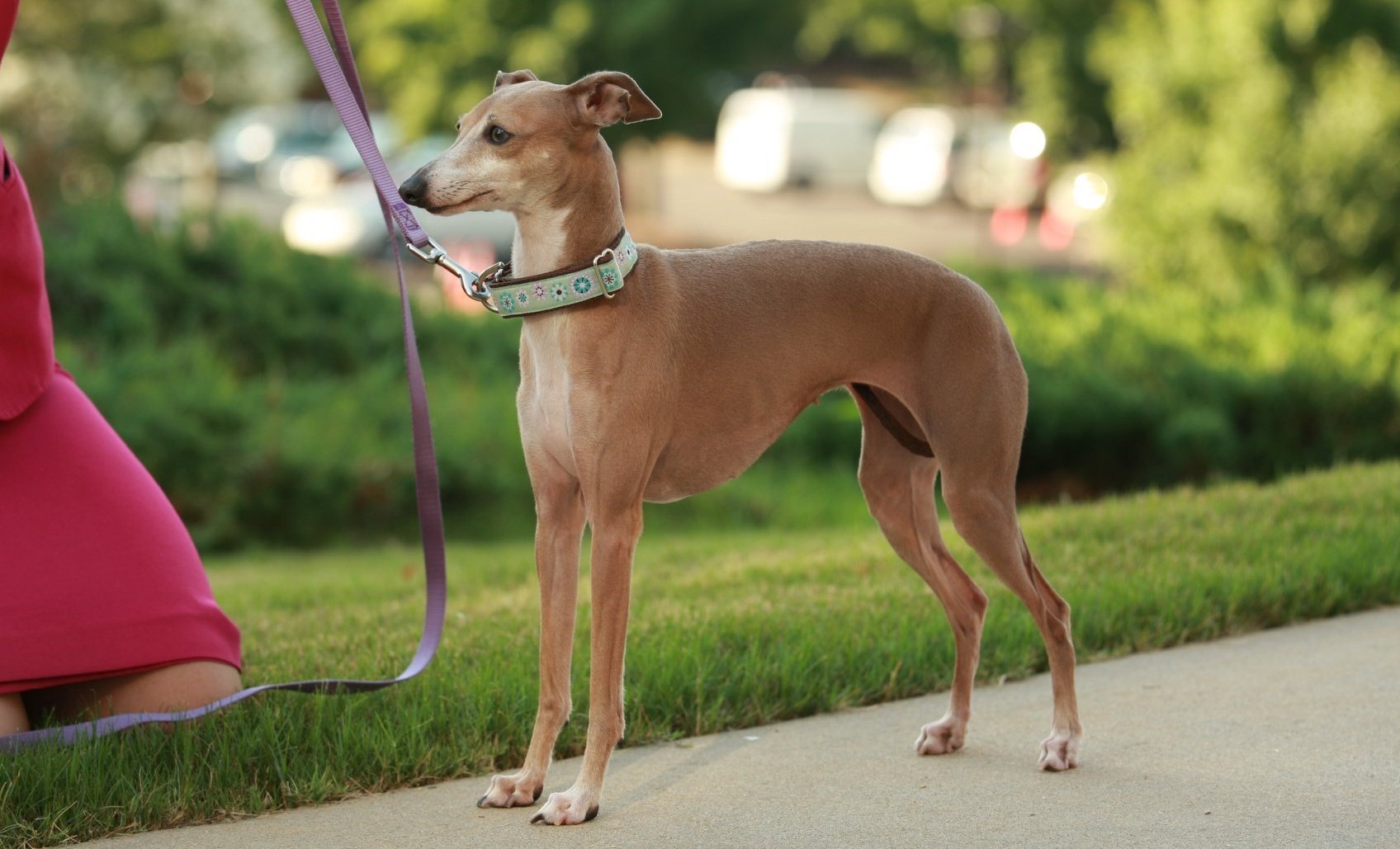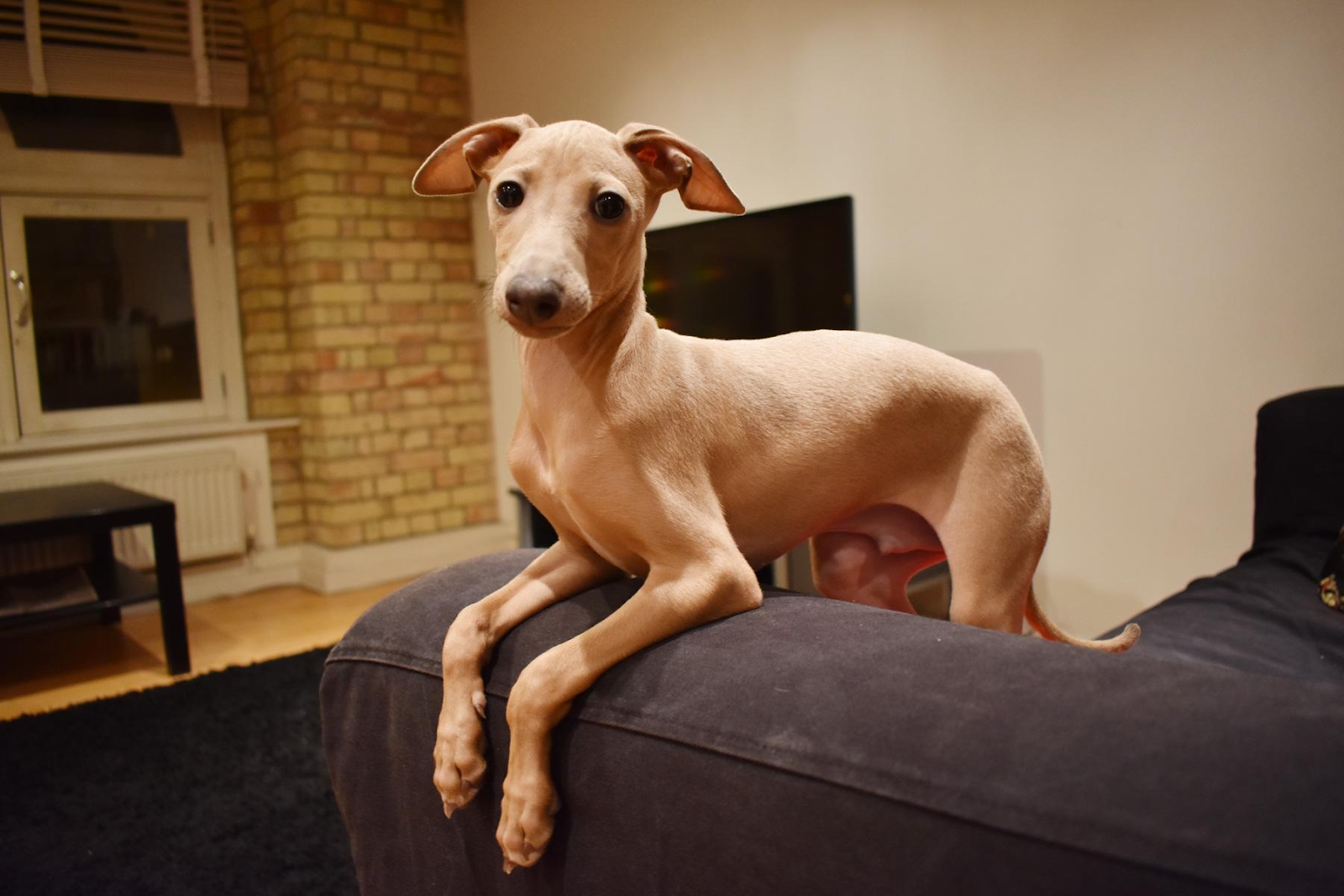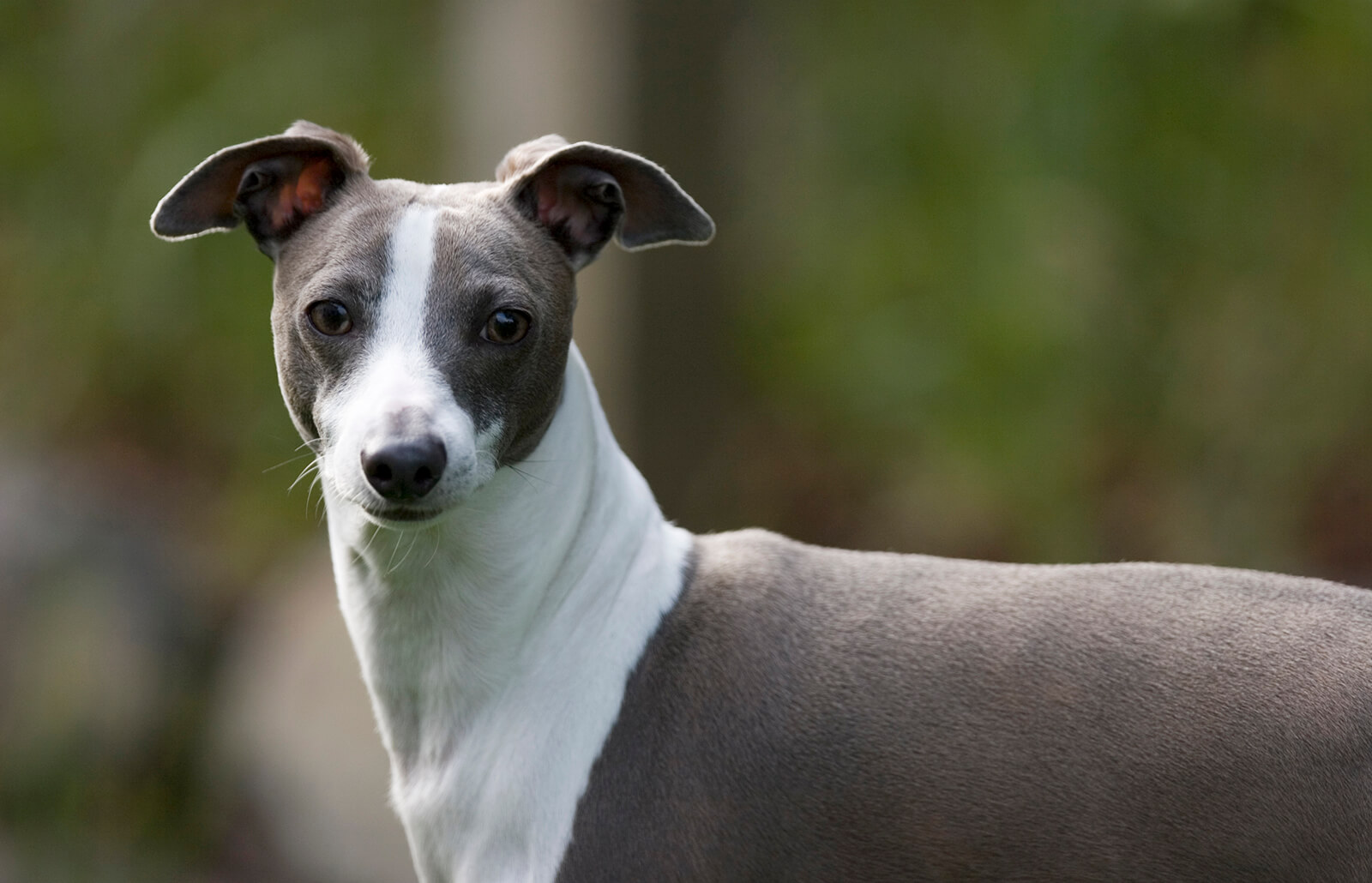Italian Greyhound: Grace, Charm, And The Perfect Companion
The Italian Greyhound, often affectionately called an "IG" or "Iggy," is a captivating toy breed renowned for its sleek, elegant appearance and a personality that is both playful and profoundly affectionate. These miniature sighthounds embody grace and agility, offering a unique blend of athleticism and a desire for comfort and companionship. If you're considering welcoming one of these charming dogs into your life, understanding their unique history, temperament, health needs, and care requirements is crucial.
From their ancient origins as noble companions to their modern role as beloved family members, Italian Greyhounds have consistently enchanted dog lovers with their delicate beauty and loving nature. This comprehensive guide will delve deep into what makes the Italian Greyhound such a special breed, helping you determine if this elegant canine is the right fit for your home and lifestyle. We'll explore everything from their historical journey to practical advice on their daily care, ensuring you have all the information needed to make an informed decision and provide a happy, healthy life for your future companion.
Table of Contents
- Unveiling the Italian Greyhound: A Miniature Marvel of Grace
- A Glimpse into History: The Enduring Legacy of the Italian Greyhound
- Temperament and Personality: More Than Just a Pretty Face
- Health Considerations for Your Italian Greyhound Companion
- Grooming and Care: Keeping Your Italian Greyhound Pristine
- Exercise and Training: Nurturing an Agile Mind and Body
- Is an Italian Greyhound Right for You? Making an Informed Decision
- Living with an Italian Greyhound: Tips for a Harmonious Home
Unveiling the Italian Greyhound: A Miniature Marvel of Grace
The Italian Greyhound is truly a greyhound in miniature, possessing the same supreme elegance and grace as its larger counterpart, but in a compact, toy-sized package. This breed is instantly recognizable by its sleek, slender build, arched back, and fine-boned structure, all contributing to an appearance of delicate beauty. Their short, smooth coat accentuates their muscular contours, making them look like living sculptures. Despite their seemingly fragile appearance, Italian Greyhounds are swift, hardy hounds, capable of impressive bursts of speed and agility.
- Home Instead Senior Care Appleton
- Creator Clinic
- Sierra Mccormick Legs
- Nc Siding And Windows Raleigh
- Becca Bloom
Beyond their striking looks, the Italian Greyhound possesses a personality that is equally captivating. They are known for being playful, affectionate, and deeply loyal companions. Their gentle nature makes them wonderful additions to many homes, often forming strong bonds with their human families. While they can be reserved with strangers, once they warm up, their loving and intelligent personalities shine through. They thrive on companionship and enjoy being close to their people, whether it's curled up on a lap or engaging in a spirited game of chase in a secure yard. Their dual nature—part athletic sighthound, part cuddly lapdog—is one of their most endearing qualities.
A Glimpse into History: The Enduring Legacy of the Italian Greyhound
The history of the Italian Greyhound is as rich and ancient as the civilizations it once graced. Archaeological evidence suggests that these miniature sighthounds were bred as noble companions some 2,000 years ago in the region that is now Greece and Turkey. During this era, when the mighty Roman Empire held sway in the Mediterranean, these elegant dogs were highly prized, often depicted in art and buried with their owners, signifying their esteemed status.
Their popularity continued to flourish throughout the Middle Ages and into the Renaissance, particularly in Italy, which is how they earned the "Italian" prefix to their name. European nobility and royalty were particularly fond of the breed, valuing their graceful appearance and affectionate demeanor. Figures like Catherine the Great of Russia and Queen Victoria of England were known to be admirers and owners of Italian Greyhounds. This long and distinguished lineage underscores the breed's resilience, having survived the upheavals of two millennia to remain a cherished companion in the modern world. Their enduring presence through history speaks volumes about their captivating charm and adaptability.
Temperament and Personality: More Than Just a Pretty Face
Describing the Italian Greyhound requires a multitude of adjectives, as their personality is a complex and delightful mix. "Little, strong, agile, fast, smart, stubborn, loyal, and athletic" perfectly top the list. These dogs are intelligent and quick-witted, capable of learning commands and tricks with ease, yet their independent nature can make training a unique challenge. They possess a keen intellect but often choose to use it to their own advantage, requiring patience and consistency from their owners.
As companions, Italian Greyhounds are truly exceptional. They are loving and affectionate, thriving on human interaction and often seeking out physical closeness. They are known for their "velcro" tendencies, preferring to be by their owner's side, whether on the couch or following them from room to room. This strong bond makes them popular family pets, but it also means they can be prone to separation anxiety if left alone for extended periods. While generally gentle, their sighthound instincts mean they have a strong prey drive and can be incredibly fast, making secure outdoor spaces essential. Their sensitivity also means they respond best to positive reinforcement and gentle handling, as harsh corrections can make them timid or resistant. Understanding this delicate balance between their affectionate side and their independent spirit is key to a harmonious relationship with an Italian Greyhound.
Health Considerations for Your Italian Greyhound Companion
While Italian Greyhounds are generally hardy hounds that have survived millennia, like all breeds, they have certain health considerations that prospective owners should be aware of. Their delicate appearance can sometimes translate to a propensity for certain issues, making proactive care and regular veterinary check-ups paramount. One of the most common concerns for the Italian Greyhound, especially when young, is the risk of leg fractures due to their fine bone structure. Puppies and young Iggies are particularly vulnerable during playful bursts or falls, necessitating careful supervision and a safe environment. Owners should "puppy-proof" their homes, blocking off stairs and providing soft landings where possible.
Beyond bone fragility, other health concerns for the Italian Greyhound can include dental disease, which is common in many toy breeds. Regular dental care, including brushing and professional cleanings, is crucial to prevent plaque buildup and gum disease. They can also be prone to certain genetic conditions, such as patellar luxation (slipping kneecaps), progressive retinal atrophy (an eye condition), and sometimes epilepsy. Responsible breeders will screen their breeding stock for these conditions to minimize their occurrence. Additionally, due to their thin coat and low body fat, Italian Greyhounds are sensitive to cold weather and require appropriate protective clothing in cooler climates. Providing a warm, draft-free home environment is essential for their comfort and health. Choosing a reputable breeder who prioritizes health testing and openly discusses potential breed-specific issues is a critical step in ensuring you bring home a healthy Italian Greyhound puppy.
Grooming and Care: Keeping Your Italian Greyhound Pristine
One of the many appealing aspects of the Italian Greyhound is their relatively low-maintenance grooming needs. Their sleek, short coat requires minimal attention, making them an excellent choice for individuals who prefer a clean and tidy companion. They shed minimally, and a quick weekly brush with a soft brush or grooming mitt is usually sufficient to remove loose hairs and keep their coat shiny. This simple routine also helps to distribute natural oils, promoting a healthy skin and coat.
While their coat is easy to care for, other aspects of their grooming routine are just as important. Regular nail trims are essential, as overgrown nails can cause discomfort and lead to foot problems. Due to their active nature, their nails may wear down naturally to some extent, but consistent checking and trimming every few weeks are recommended. Dental hygiene, as mentioned under health, is crucial; daily brushing with dog-specific toothpaste can significantly reduce the risk of dental disease. Additionally, their ears should be checked weekly for cleanliness and any signs of infection or irritation. A gentle wipe with a damp cloth or pet-safe ear cleaner can keep them healthy. Regular grooming sessions also provide an excellent opportunity to bond with your Italian Greyhound and perform a quick check for any lumps, bumps, or skin irritations, allowing for early detection of potential health issues.
Exercise and Training: Nurturing an Agile Mind and Body
Despite their delicate appearance, Italian Greyhounds are swift, hardy hounds with significant energy reserves. They are athletic and enjoy opportunities to run and play. However, their exercise needs are somewhat unique. They thrive on short bursts of high-intensity activity, such as sprinting in a securely fenced yard or a quick game of fetch, rather than long, sustained runs. A couple of short walks daily, combined with playtime, are usually sufficient to keep them physically stimulated. It's crucial that any outdoor exercise takes place in a secure area, as their strong prey drive and incredible speed mean they can quickly disappear if they spot something interesting to chase. Off-leash activities should only occur in fully enclosed spaces, as their recall can be unreliable when their sighthound instincts kick in.
When it comes to training, the Italian Greyhound presents an interesting challenge. They are intelligent and capable of learning quickly, but their independent nature can make training challenging. They respond best to positive reinforcement methods, such as treats, praise, and toys, and thrive on consistency. Harsh corrections or punishment can make them shut down or become fearful. House-training can be particularly challenging for this breed, often requiring patience, consistency, and sometimes the use of pee pads or frequent outdoor trips, especially in cold weather due to their sensitivity to the cold. Early socialization is also vital to help them become well-adjusted adults, exposing them to various sights, sounds, people, and other dogs from a young age. While they may be stubborn at times, their loyalty and desire to please their owners ultimately make them trainable and responsive companions with the right approach.
Is an Italian Greyhound Right for You? Making an Informed Decision
Thinking about getting an Italian Greyhound puppy or dog requires careful consideration to ensure this breed is the right fit for your lifestyle. These dogs are popular companions and family pets, but they also have some special needs and requirements that potential owners must be prepared for. Their sensitivity to cold, their fragile bones, and their need for companionship mean they are best suited for homes where they can be primarily indoors and receive plenty of attention. They thrive in environments where they are part of the family's daily life and are not left alone for long periods.
Their playful and affectionate nature makes them wonderful companions for individuals, couples, or families with older, respectful children. While they can coexist with other pets, their strong prey drive means careful introductions are necessary, especially with smaller animals. If you're looking for a low-shedding, intelligent, and deeply loving dog that enjoys both energetic play and cozy snuggles, an Italian Greyhound might be your perfect match. However, if you lead a very active outdoor lifestyle that involves rugged adventures, or if you're often away from home, another breed might be more suitable. It's essential to honestly assess your living situation and commitment before bringing an Italian Greyhound into your home.
Finding Your Italian Greyhound: Adoption vs. Purchase
Once you've decided an Italian Greyhound is the right dog for you, the next step is finding your new companion. "Why buy a dog for sale when you can adopt?" is a question worth considering. Adopting an Italian Greyhound from a rescue organization or shelter can be an incredibly rewarding experience. Many wonderful Iggies end up in rescue through no fault of their own, often already house-trained and socialized. Websites like Petfinder can help you find Italian Greyhounds available for adoption in your area, connecting you with local shelters and breed-specific rescues. Adopting not only gives a deserving dog a second chance but also often comes with the benefit of knowing more about the dog's temperament and history.
However, if you decide to purchase an Italian Greyhound puppy, it's crucial to find a reputable and ethical breeder. A good starting point is the Italian Greyhound Club of America (IGCA), which maintains a breeder referral list of club members who agree to abide by their written code of ethics. This ensures that breeders prioritize the health, temperament, and well-being of their dogs, conducting necessary health screenings and providing proper care for their puppies and adult dogs. Avoid breeders who cannot provide health clearances for the puppy's parents, refuse to let you see where the puppies are raised, or seem more interested in making a quick sale than in finding the right home for their dogs. Remember, a responsible breeder will also ask you many questions to ensure you are a suitable owner.
What to Expect When Purchasing a Puppy
If you decide to purchase an Italian Greyhound puppy, you should expect to pay as little as $500 and as high as $1,200, though prices can vary based on lineage, breeder reputation, and location. This price typically includes initial vaccinations, deworming, and sometimes microchipping. When looking for a breeder, start with the Italian Greyhound Club of America, which lists breeders from around the country. Reputable breeders like Amayz Italian Greyhounds specialize in socialized puppies cared for in a family room environment, ensuring the puppies are well-adjusted and accustomed to household sounds and interactions from a young age. Similarly, Little Iggys, a home to some of the UK's best Italian Greyhounds, including stud dogs and puppies, emphasizes responsible breeding practices and the early socialization of their puppies.
A good breeder will be transparent about their practices, eager to answer your questions, and willing to provide references. They will also offer a health guarantee for their puppies and be a resource for you throughout your dog's life. Visiting the breeder's facility, if possible, allows you to observe the living conditions of the dogs and the temperament of the parent dogs. Investing in a puppy from a reputable source is not just about the initial cost; it's about ensuring you are bringing home a healthy, well-adjusted Italian Greyhound that has been given the best possible start in life, reducing the likelihood of future health or behavioral issues.
Living with an Italian Greyhound: Tips for a Harmonious Home
Bringing an Italian Greyhound into your home is an invitation to share your life with an affectionate and playful companion. To ensure a harmonious home, understanding and addressing their specific needs is key. These dogs thrive on companionship and genuinely want to be a part of your daily activities. They are not dogs that do well being left alone for long hours; they need consistent human interaction to prevent loneliness and potential destructive behaviors stemming from anxiety. Providing them with comfortable, warm sleeping spots—think soft blankets, dog beds, and even sweaters in cooler temperatures—is essential due to their minimal body fat and thin coats.
Creating a safe environment is paramount for an Italian Greyhound. Their delicate build means they are prone to injury, especially as puppies. Puppy-proofing your home by blocking access to stairs, ensuring no precarious jumps are possible, and supervising playtime, especially with children or larger pets, can prevent accidents. Because of their speed and sighthound instincts, a securely fenced yard is non-negotiable for any off-leash exercise. They can easily clear low fences or slip through small gaps. Lastly, consistent training and socialization, as discussed earlier, will ensure your Italian Greyhound grows into a well-mannered and confident adult. With patience, love, and a commitment to their unique needs, an Italian Greyhound will undoubtedly enrich your life with their grace, charm, and unwavering devotion.
In conclusion, the Italian Greyhound is a breed of exquisite beauty, deep affection, and surprising athleticism. Their long history as noble companions speaks to their enduring appeal, and their gentle, loving nature makes them cherished family members. While they come with specific care requirements, particularly regarding their delicate physique and need for warmth and companionship, the rewards of sharing your life with an Italian Greyhound are immeasurable. By understanding their unique traits and committing to responsible ownership, you can provide a fulfilling life for this miniature marvel of grace.
Are you considering adding an Italian Greyhound to your family, or do you already share your home with one of these elegant companions? Share your experiences and questions in the comments below! Your insights can help others on their journey to finding the perfect canine friend. For more in-depth guides on dog breeds and pet care, be sure to explore other articles on our site.

Italian Greyhound - Personality, Basic Trainability, Diet & Origin

Italian Greyhound - Personality, Basic Trainability, Diet & Origin

Italian Greyhound - Personality, Basic Trainability, Diet & Origin